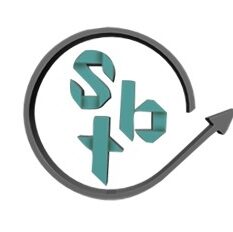eRMS
In today’s world, ensuring the security of institutes and organizations has become a paramount concern. With the growing need to manage various aspects of security and operations, implementing comprehensive management systems has become essential. In this article, we will explore the importance and benefits of visitor management, materials management, and dak management systems. These systems help capture and organize data, streamline processes, and enhance overall security and efficiency. Let’s delve deeper into each of these areas.
Visitor Management System: A well-implemented visitor management system plays a vital role in maintaining the security of an institute. Whether it is walk-in visitors, appointment-based visitors, foreign visitors, or even employees and trainees, having a systematic and organized approach to visitor management is crucial. By capturing and storing visitor details in a centralized repository, this system ensures that necessary information is readily available for security and administrative purposes.
Benefits of a Visitor Management System:
Improved Security: A visitor management system enables institutes to screen and verify each visitor, ensuring that only authorized individuals gain access to the premises. By tracking and monitoring visitor movements, potential security breaches can be identified and addressed promptly.
Streamlined Check-in/Check-out Process: With a visitor management system in place, the check-in/check-out process becomes efficient and hassle-free. Visitors can be registered, issued identification badges, and guided to their intended destinations seamlessly, reducing waiting times and enhancing visitor experience.
Enhanced Record-Keeping: By maintaining a centralized repository of visitor information, institutes can easily access historical data and generate comprehensive reports. These reports can be invaluable for auditing purposes, compliance requirements, or even in the event of an emergency.
Materials Management System: The section of materials management, particularly at the reception, is responsible for the inward and outward movement of materials. It includes managing returnable and non-returnable materials, maintaining auditable records, and ensuring efficient inventory management.
Benefits of a Materials Management System:
Efficient Inventory Control: A materials management system provides real-time visibility into the availability and movement of materials. This enables efficient inventory control, preventing stockouts or excesses, optimizing resource allocation, and minimizing costs.
Accurate Documentation: By automating the documentation process, a materials management system eliminates the need for manual record-keeping, reducing human errors and ensuring accuracy. Auditable records can be easily accessed, enhancing transparency and accountability.
Streamlined Procurement Process: With a materials management system in place, the procurement process becomes streamlined and efficient. Institutes can track and manage purchase orders, vendor information, and delivery schedules, ensuring timely procurement and minimizing supply chain disruptions.
Dak Management System: Dak management refers to the management of inward and outward dak (correspondence) movements within an organization. It involves user-specific dak tagging, ensuring efficient tracking of documents, and generating daily and monthly reports.
Benefits of a Dak Management System:
Improved Document Traceability: With a dak management system, organizations can effortlessly track the movement of documents. Each document can be tagged and assigned to a specific user, enabling easy tracing and accountability.
Efficient Workflow: By automating the dak management process, institutes can streamline workflow and eliminate manual handling of documents. Documents can be electronically routed, approved, and shared, reducing time delays and increasing productivity.
Comprehensive Reporting: A dak management system generates daily and monthly reports, providing insights into the volume and nature of documents received and dispatched. These reports can aid in identifying bottlenecks, optimizing processes, and improving overall efficiency.
Conclusion: Implementing comprehensive management systems such as visitor management, materials management, and dak management is a proactive step towards enhancing security and streamlining operations. These systems provide numerous benefits, including improved security measures, streamlined processes, accurate record-keeping, efficient inventory management, and enhanced productivity. By integrating these systems into an institute’s website, organizations can ensure seamless access, easy data retrieval, and a user-friendly experience. Embracing these technologies not only safeguards institutions but also contributes to a more secure and efficient working environment.


